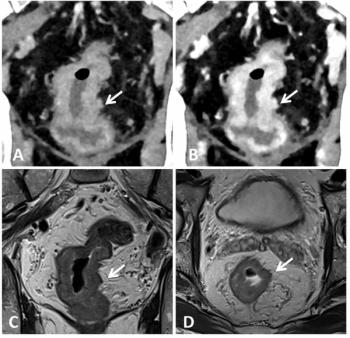
MRI Shows Postconcussive Brain Damage in Hockey Players
Neuroimaging with MRI shows an association between brain structure and postconcussive symptoms.
Magnetic resonance images have found an association between brain structure and postconcussive symptoms among young, otherwise-healthy male athletes, according to a study published in
Researchers from the University of Vermont College of Medicine in Burlington studied 27 male hockey players to investigate the degree to which concussion history and postconcussive symptoms are associated with cortical morphology. "We believe that injury to a developing brain may be more severe than injury to an adult brain," co-author James Hudziak, MD, pediatric neuropsychiatrist and director of the Vermont Center for Children, Youth and Families at the school of medicine, said in a release.
The subjects, aged between 14 and 23, provided self-reported concussion history, and 27 subjects underwent both neuroimaging and cognitive testing (Immediate Post-Concussion Assessment and Cognitive Testing [ImPACT]). “[A] positive concussion history was defined as a self-report of having previously received a diagnosis of a sports-related concussion by a medical professional,” the authors wrote.
Sixteen subjects reported having a history of concussion, frequency ranged from 1 to 4. At the time of baseline assessment, all were at least 3 months removed from their most recent concussion. The subjects had all been cleared to play by team physicians.[[{"type":"media","view_mode":"media_crop","fid":"31815","attributes":{"alt":"James Hudziak, MD","class":"media-image media-image-right","id":"media_crop_3011515495667","media_crop_h":"0","media_crop_image_style":"-1","media_crop_instance":"3357","media_crop_rotate":"0","media_crop_scale_h":"0","media_crop_scale_w":"0","media_crop_w":"0","media_crop_x":"0","media_crop_y":"0","style":"height: 213px; width: 160px; border-width: 0px; border-style: solid; margin: 1px; float: right;","title":"James Hudziak, MD","typeof":"foaf:Image"}}]]
Five of the 29 subjects had been earlier diagnosed attention-deficit/hyperactivity disorder (ADHD), and three took psychostimulant medication at the baseline assessment.
The results showed that ImPACT TSS was inversely associated with local cortical thickness in widespread brain areas, the authors wrote. “Associations were revealed in a host of frontal as well as bilateral temporoparietal cortices. Conversely, concussion history was not associated with cortical thickness. An “Age by Concussion History” interaction was associated with thickness in the right ventrolateral and right parietal cortices. Post-hoc analysis revealed that concussed participants did not exhibit age-related cortical thinning in these regions.”
The researchers concluded that postconcussive symptoms among young, otherwise-healthy male athletes and related reductions in cortical thickness may be tied to participation in a full-contact sport that involves frequent blows to the head.
Newsletter
Stay at the forefront of radiology with the Diagnostic Imaging newsletter, delivering the latest news, clinical insights, and imaging advancements for today’s radiologists.



























